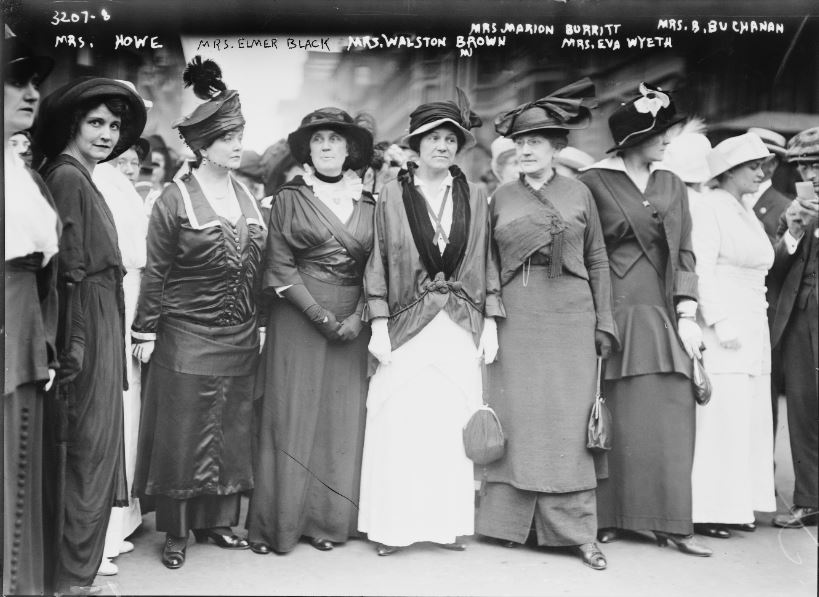
Bain Collection, Library of Congress. Click to enlarge.
In the world of high fashion impracticality, the stylish silhouettes of 1914 look especially odd to contemporary eyes. They included a long tunic that billowed around the hips with a very narrow skirt at the bottom. On her blog Witness to Fashion, Susan has shown the Poiret dress that inspired the look, the so-called sorbet outfit of 1913. She also documents how the style trickled down to American fashion magazines. It became was slightly less extreme, but it still looks both unflattering–who needs all of that fabric around the hips–and impractical–how well could one walk in those narrow skirts?
Did anyone actually wear the Parisian inspired silhouette? I looked through the photos from the George Grantham Bain Collection held at the Library of Congress to get an idea. This collections holds tens of thousands of prints from one of the country’s first news services. The celebrities and fashions of New York are particularly well documented. Although women in Peoria might not have adopted the new style, some in New York did.
In the top photo we see a mother and her two daughters walking on Fifth Avenue. The photo is dated between 1910-1915 by the library, but we can see elements of the narrow skirt and wide hips of 1914 here. Note that these are coats, not dresses. It appears that the young woman on the right has to hold up her coat to walk.

Bain Collection, Library of Congress, 1914. Click to enlarge
In the photo above, showing leaders of the Women’s Peace March of 1914, there are many variations of the tunic over narrow skirt. The oldest looking woman, Mrs. Marion Burritt (third from the right), has avoided the accented hip line, although her skirt is quite narrow. It even has a slit so that she can walk more easily. To her left, Mrs. Watson Brown has gathered a lot of fabric at her hip, but her skirt seems much wider. The most extravagant woman, who I think is Mrs. Elmer Black, has decided on a multi tiered effect. Her outfit includes a close fitting long bodice, a wide band around her hips, an “A” shaped over-skirt, finished by an underskirt so narrow that it almost looks like pants. The unnamed woman in between Mrs. Black and Mrs. Brown apparently decided that the latest look was not for her.


Thank you for these photos. That Persian lamb coat and oversized muff are horrible beyond (verbal) description. Mrs. Howe, looking into the camera at far left, is lovely — and she is wearing a draped skirt which looks much better in silk (and viewed from the side) than I would have expected. At least no one is wearing a hobble to the march…. Happy Thanksgiving!